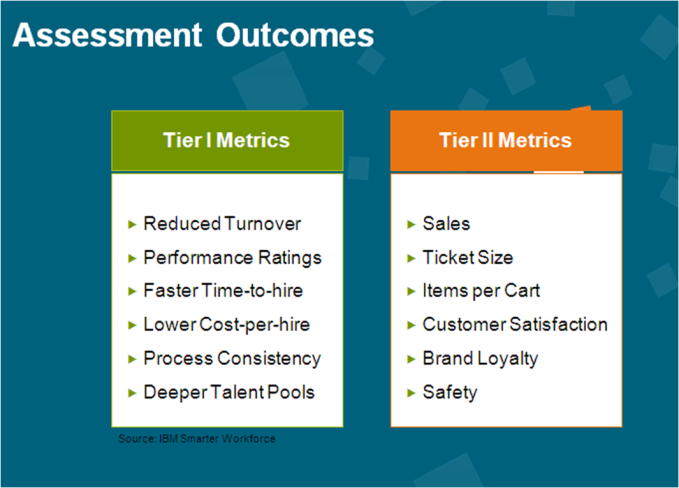When
including assessments into the recruitment process, most clients we
speak to are keen to know the outcomes and often focus on reduced time
to hire and lesser turnover.
As
a consequence of introducing assessments, other improvements such as
consistency in the process and a better idea of which sourcing channel
is identifying better candidates are also very much possible.
We
like to think of these as Tier 1 metrics or the ‘non-negotiables’.
Unfortunately, most organizations do not build up on those improvements
to realize possible improvements in business outcomes. We define these
as Tier 2 metrics and they largely vary based on the job role.
For instance, for sales roles, what is the improvement in sales productivity as a result of introducing new organization assessment solutions? Or for quality & product development roles, has selecting the right employee translated into better brand quality?
In
order to realize this, it’s important to view assessments as a long
term (5 to 10 year) investment decision. That in turn enables
organizations to view immediate and long term benefits that result from
the out-years and are correlated with business performance.
The
best starting point for implementing such a strategy is to first
identify the most critical job role in any organization or industry.
This could be a Store Manager or Assistant Store Manager in Retail, a
Branch Manager for Financial Services firms, a Developer for Software or
IT organizations or a Warehouse Manager for eCommerce companies.
So how long term & strategic is your assessment approach?


No comments:
Post a Comment